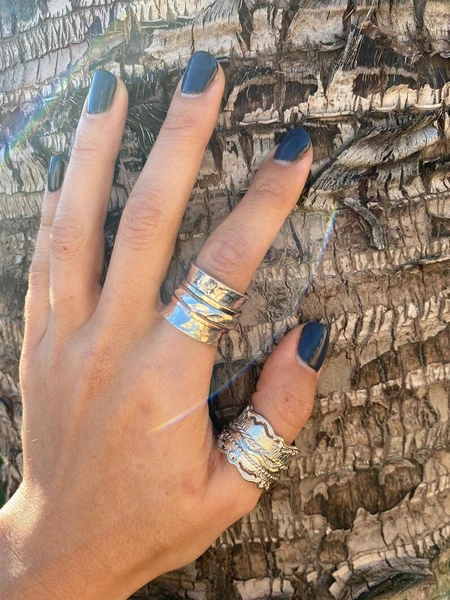The Connection Between Jewish Jewelry and the Land of Israel
More than adornment, Jewish jewelry tells a story of heritage and homeland. From Jerusalem stone to Hebrew symbols, each piece connects the wearer to the Land of Israel—its history, its faith, and its soul.
A Heritage Woven into Jewelry
There is something profoundly intimate about wearing a piece of Jewish jewelry—an amulet, a hebrew blessing pendant, or a simple inscription—that ties the wearer to something greater than themselves. Beyond faith and identity, there’s a deep thread running through every piece: the connection to the Land of Israel. For centuries, Jewish jewelry has not only adorned bodies but also carried the weight of longing, memory, and homeland. In exile, a necklace or ring often whispered prayers for return to Zion. In celebration, it marked the rhythms of Jewish life aligned with the holy land. At its heart was always the land that gave birth to those traditions: Eretz Yisrael.
Jewelry made of Materials from the Holy Land
This connection isn’t abstract—it’s elemental. Many of the materials used in Judaica pieces come directly from Israel’s soil and landscape. Jerusalem stone, olive wood, Dead Sea minerals, and even earth from the Galilee have been embedded into modern designs. These aren't just raw elements; they are pieces of the story of Israel itself, carried across oceans and generations. When you wear a pendant containing a chip of Jerusalem stone or beads of Eilat turquoise, you carry a tangible fragment of the land’s essence wherever you go.
Designs that Echo the Holy Land of Israel
The design motifs of Jewish jewelry often echo the landscapes and symbols of Israel. The curves of Hebrew letters etched into silver follow the rhythm of ancient script carved into Jerusalem’s walls. Symbols like the menorah, the pomegranate, and the Lion of Judah recall biblical imagery and Temple iconography. Even a modest mezuzah necklace becomes a wearable reminder of home, of the commandments, and of the land promised to our ancestors. For example, a piece featuring a pomegranate invokes the fruitfulness of the land and Torah, and many wear a pomegranate pendant as a symbol of abundance and mitzvot.
Wearing Israel Close to Heart
To wear Jewish jewelry inspired by or made in Israel is not only to honor tradition—it’s to stay connected with Israel itself. For many, it’s an expression of belonging and a way of keeping Israel close no matter where life leads. A necklace handcrafted in Jerusalem or a ring set with Israeli opal carries a story and a prayer within it. In times of celebration or challenge, such pieces offer strength not just through faith, but through a sense of place. They’re a small piece of Israel one can hold on to, serving as a comfort and inspiration.
Israeli Artisans and Living Tradition
Every Jewish generation has had its relationship with the land. Today, artisans and designers in Israel continue that dialogue, blending history with innovation. Handmade pieces from Jerusalem workshops, boutique studios in Tel Aviv, and family-run silversmiths in Tzfat each bring the spirit of Israel into form. When you purchase a piece directly from an Israeli artisan, you’re supporting not just an individual but a continuum of cultural craftsmanship. It’s a modern way of engaging with the land—through commerce that sustains tradition.
Conclusion: A Timeless Bond
Ultimately, Jewish jewelry is more than decoration. It’s a bridge: between past and present, between diaspora and homeland, between the wearer and the sacred earth of Israel. In that bridge lies the timeless beauty of our story. Each pendant or judaica ring is a little ambassador of Israel’s spirit, allowing anyone, anywhere, to carry a timeless piece of the Holy Land with them.

